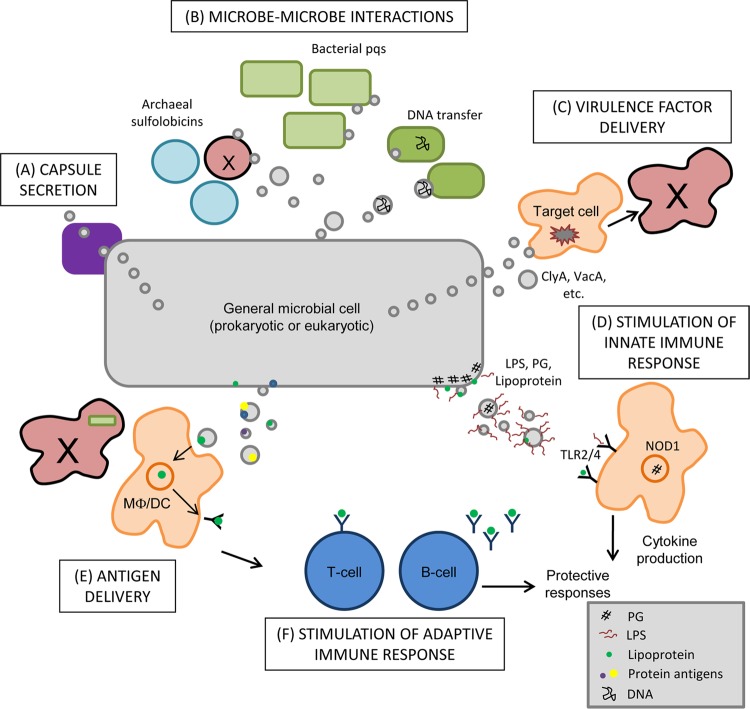Fig 4.
Biological impact of MV release. MVs, originating from bacteria, fungi, archaea, or parasites, possess many functions in microbial physiology and pathogenesis. MVs promote the secretion of capsular polysaccharide to the cell surface (A) and are utilized for cell-cell communication between Bacteria (release of quorum-sensing molecules and transfer of DNA) and Archaea (secretion of antimicrobials) (B). (C) For pathogenic microbes, the role of MVs in vivo is likely multifaceted, including the ability to directly deliver virulence factors, such as toxins, to target host cells. (D) Natural microbial structures present in MVs can act to stimulate the innate immune system through activation of TLRs (via LPS and/or lipoprotein sensing) and NLRs (via peptidoglycan detection). (E) These antigenic structures contained in MVs likely interact with antigen-presenting cells (APC) when released in vivo during infection, facilitating the presentation of MV antigens in cases where APC may be impaired by cytotoxic organisms. (F) Antigen presentation can lead to the stimulation of adaptive immune responses, triggering T-cell and B-cell responses that are directed toward MV antigens. The ways in which MVs are utilized by microbes during growth (and during infection in the case of pathogenic organisms) are complex and they underscore the importance of these structures for all microbial life.

